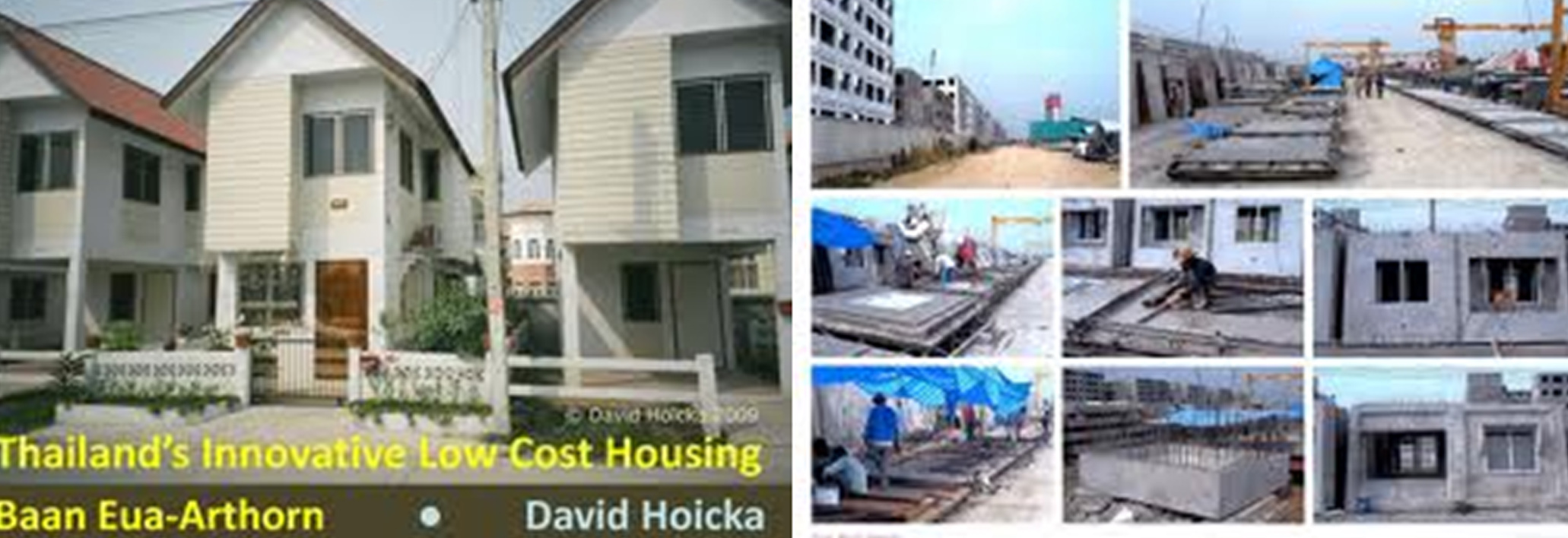Housing: The Need III
- Dr. Chafia Ferhat
- February 19, 2013
- Ponder
- Dr. Chafia Ferhat, FENN DESIGNERS, Housing, Thailand Housing Development
- 0 Comments
“…housing development in Thailand can be divided into three major periods: the boom (1990-1996), the bust (1997-2001) and the recovery (2002 onwards).
The effects of the market bust were clearly observed in 1996, but the massive bust occurred when the Baht was floated or devalued on July 2,1997.
Housing development, however, has contributed to the economy and the country.
A unique feature of Thailand’s housing is that almost all homes are constructed and
provided by the private sector.
Bangkok has few street dwellers which means the housing problem is not severe
and can be well managed.” According to the latest UNHABITAT report.
Thailand is located in the centre of South East Asia sharing common borders with Malaysia, Myanmar, Laos and Cambodia. Its population is approximately 65 million people.
The economy of Thailand is a newly industrialized economy. It is a heavily export dependent economy, with exports representing about 60% of the gross domestic product
Thailand is one of the fastest growing economies in Asia.
Unemployment rate was at 1.2% as year 2012 giving Thailand one of the lowest
unemployment rates in the world.
Thailand economy and wealth is totally dependent on agriculture, manufacturing and tourism.
Thailand do not relay on free natural resources such as oil and gas for its growth and the development of its economy.
And as indicated above in addition to having the one of the lowest unemployment rates in the world, it is also one of the few developing countries in the world that have successfully provided the majority of its people from all strata of the society with housing.
Here is a chronological sequence of strategies adopted on low-income housing provision
since 1948, to illustrate changes in policies towards housing provision:
- Housing Production Policy, 1948-1958 (imitating western countries on public
housing provision)
- City Beautification, 1960-1971 (slum clearance and large-scale city planning)
- Slum Improvement, 1970s (in accordance with a limited budget for slums)
- Land for Housing the Poor, 1980s (in order to promote a sense of belonging)
- Recognition / Enabling policies, 1990s (allowing private developers and local
initiatives to work)
- A Million Housing Units, 2000s
Although it has taken 6 decades but Thailand is one of the few developing countries who
has successfully re-engineered policies, financial models, and delivery methods to deal with housing shortage. When I see the driver and the housekeeper have access to housing loans, own their own accommodation, I wonder what’s the problem in Algeria, why can’t engineers and doctors afford a simple 2 bedroom flat?
Related Posts
- Lydia Tiasiri
- April 2, 2013
Keeping up the kitchen
Without a doubt, the central focus of a household is the kitchen. In my experience, this is whe ..
- Sheetal Chailertborisuth
- December 6, 2012
The Challenges of the Water Hyacinth furniture
These days designers are more and more challenged to find environmentally friendly materials to ..

I just could not leave your site prior to suggesting that I actually enjoyed the usual information a person supply…
This is fantastic! Keep up the good work. ❤️
It's interesting to see how glass can be used in so many ways to be converted into art. My husband…